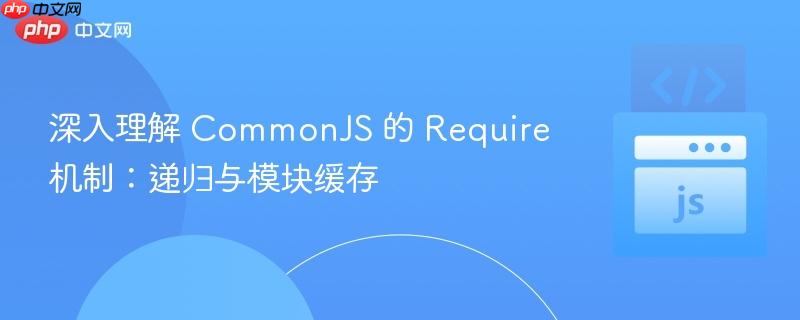
这个实现展示了 require 的基本流程:
require 函数的递归调用是 CommonJS 模块系统的一个关键特性。当一个模块依赖于其他模块时,它会使用 require 函数加载这些依赖模块。这会导致 require 函数被递归调用,直到所有依赖模块都被加载和执行。
为了更好地理解递归调用,我们考虑以下示例:
square.js:
// square.js
const square = function (n) {
return n * n;
}
module.exports = square;squareAll.js:
// squareAll.js
const square = require('./square');
const squareAll = function (ns) {
return ns.map(n => square(n));
}
module.exports = squareAll;index.js:
// index.js
const squareAll = require('./squareAll');
console.log(squareAll([1, 2, 3, 4, 5]));当 index.js 首次调用 require('./squareAll') 时,require 函数会执行以下步骤:
此时,require 函数被递归调用,以加载 square.js。require 函数会重复上述步骤,加载、封装和执行 square.js。一旦 square.js 加载完成,require 函数会返回 square 函数,并将其赋值给 squareAll.js 中的 square 变量。
然后,squareAll.js 继续执行,定义 squareAll 函数,并将其导出。最后,require 函数返回 squareAll 函数,并将其赋值给 index.js 中的 squareAll 变量。
CommonJS 模块系统使用缓存来避免重复加载模块。当一个模块被 require 函数加载后,它会被添加到缓存 require.cache 中。后续对同一模块的 require 调用会直接从缓存中返回模块的导出,而无需重新加载和执行模块代码。
模块缓存机制可以显著提高模块加载的效率,并避免潜在的副作用,例如多次执行初始化代码。
在上面的例子中,如果 squareAll.js 中多次 require('./square'),那么 square.js 只会被加载和执行一次。后续的 require('./square') 调用会直接从缓存中返回 square 函数。
理解 CommonJS 模块系统的 require 机制对于编写可维护、可扩展的 Node.js 应用程序至关重要。 掌握递归调用和模块缓存的原理,可以帮助你更好地组织代码,避免潜在的问题,并提高应用程序的性能。
以上就是深入理解 CommonJS 的 Require 机制:递归与模块缓存的详细内容,更多请关注php中文网其它相关文章!

每个人都需要一台速度更快、更稳定的 PC。随着时间的推移,垃圾文件、旧注册表数据和不必要的后台进程会占用资源并降低性能。幸运的是,许多工具可以让 Windows 保持平稳运行。




Copyright 2014-2025 https://www.php.cn/ All Rights Reserved | php.cn | 湘ICP备2023035733号